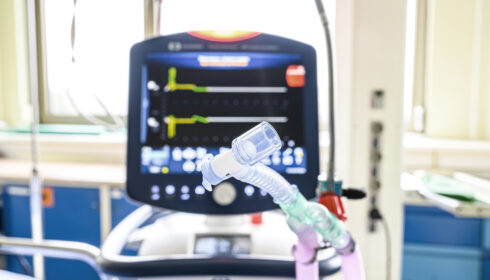HARP2
HARP2: Simvastatin in the Acute Respiratory Distress Syndrome
D. McAuley & HARP-2 Investigators. NEJM 2014;1-9. doi:10.1056/NEJMoa1403285
Clinical Question
- In mechanically ventilated adults with acute respiratory distress syndrome (ARDS), does simvastatin compared to placebo reduce ventilator dependence?
Design
- Multi-center, double-blind
- Randomised in a 1:1 ratio using permuted blocks and stratification according to study site and vasopressor requirement
- Designed with 80% power to detect a difference of 2.6 ventilator-free days from a baseline of 12.7 (SD 10.6), with significance level of 0.05, if 524 patients were recruited
- Allowing for 3% withdrawal, planned to recruit 540 patients
- Intention-to-treat statistics
Setting
- 40 general ICUs in UK and Ireland
- December 2010 – March 2014
Population
- Inclusion: mechanical ventilation + onset of ARDS within previous 48 hours (PaO2:FiO2 < 300 mmHg, bilateral pulmonary infiltrates, no evidence of left atrial hypertension)
- Exclusion: pregnancy, contraindications to statins, recent statin administration (within 2 weeks)
- 5926 patients were screened and 540 were randomised
Intervention
- Enteral simvastatin 80mg once daily for a maximum of 28 days
Control
- Placebo therapy at the same frequency and duration as the intervention group
- For both groups, ventilation strategy was not defined, but low tidal volume ventilation with plateau pressures maintained below 30 cmH2O were encouraged.
Outcome
- Primary outcome: there was a small but not statistically significant difference in the ventilator-free days to day 28 between the groups (given as mean±SD)
- simvastatin group 12.6±9.9 days vs placebo group 11.5±10.4
- mean difference 1.1 days (95% CI -0.6 to 2.8; p=0.21)
- Secondary outcome:
- oxygenation index: no significant difference
- SOFA score: no significant difference
- days free of non-pulmonary organ failure to day 28: no significant difference
- death within 28 days: no significant difference
- death before discharge from hospital: no significant difference
- safety: significantly more adverse events in simvastatin group (raised CK and raised liver enzymes), but no difference in serious adverse events
Authors’ Conclusions
- Simvastatin therapy did not improve clinical outcomes in patients with ARDS
Strengths
- Builds upon carefully planned theoretical work, animal, in vitro and phase 1 clinical trials
- Multi-centre, pragmatic study design, allowing clinicians to treat as they normally did
- Inclusive of all causes of ARDS (c.f. SAILS trial, that focused on sepsis)
- A priori publication of protocol and statistical plan
Weaknesses
- Statistically significant difference between groups in baseline PaO2:FiO2 ratio, with simvastatin group having slightly worse ratios: 123 vs. 132.4 mmHg. This will bias toward null hypothesis. A post-hoc statistical adjustment was performed; the between-group difference remained statistically insignificant.
The Bottom Line
- Simvastatin use in ARDS has no benefit, based upon these data.
- This trial does demonstrate a good safety profile in the critically ill, although biochemical abnormalities are more likely with simvastatin.
External Links
- [article] Simvastatin in the Acute Respiratory Distress Syndrome
- [further reading] Future therapies for ARDS by Curley
- [further reading] Statins in the Critically Ill by Life in the Fast Lane
Metadata
Summary author: @SteveMathieu75 and @DuncanChambler
Summary date: 10 December 2014
Peer-review editor: @davidslessor



